Slow growth forecast reacts to reduced profitability
It does not appear that the shortfall in this fall’s hog slaughter has been due to market hogs being backed up on farms. Carcass weights in recent weeks have been even with or below last year’s level.
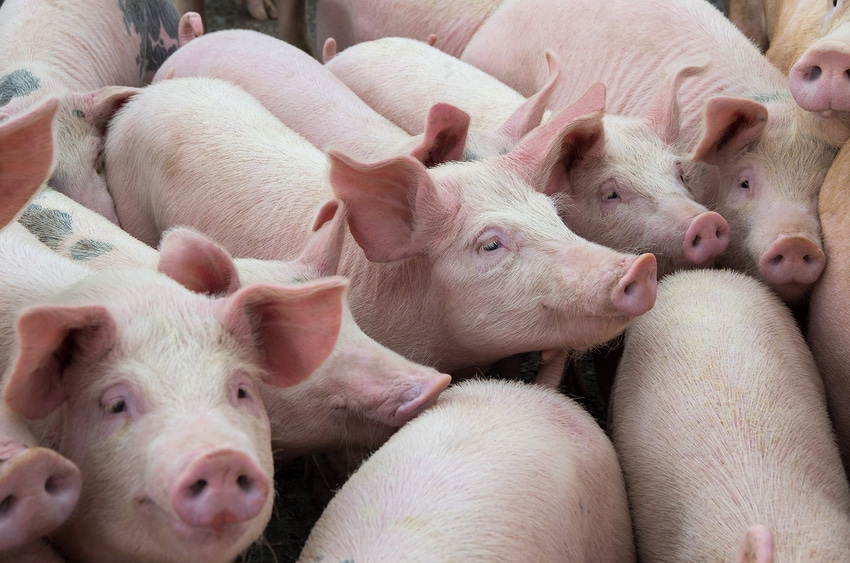
The results of USDA’s December hog inventory survey will be released Thursday of this week. Barrow and gilt slaughter during September-November was lower than implied by the September market hog inventory (up 1.6% versus up 3.3%). Thus, it is likely that the USDA will revise downward their estimates of heavyweight hogs in the September market hog inventory, the size of the March-May pig crop and the number of sows farrowed during March-May 2018. USDA rarely revises past estimates of pigs per litter.
For 16 of the last 17 quarters USDA’s farrowing intentions estimate has been lower than the subsequent number of sows that were farrowed. This streak may come to an end if USDA makes as large a downward revision in March-May farrowings as I’m expecting.
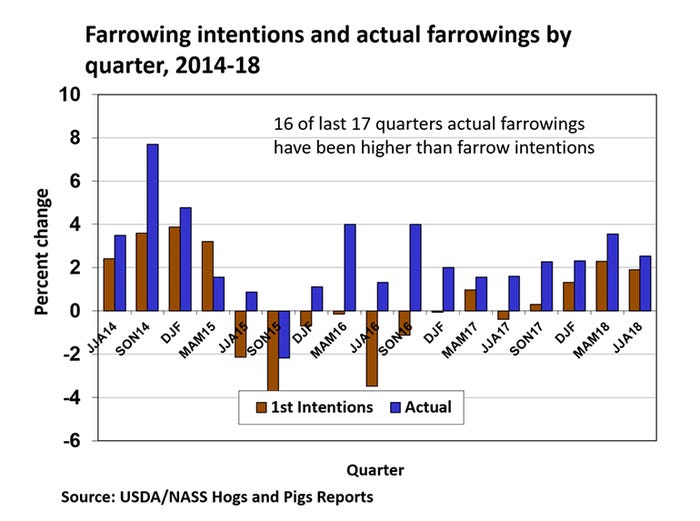
It does not appear that the shortfall in this fall’s hog slaughter has been due to market hogs being backed up on farms. Carcass weights in recent weeks have been even with or below last year’s level.
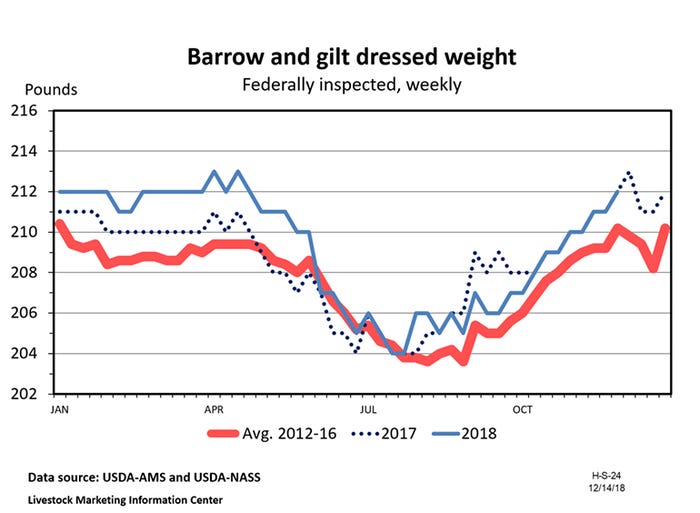
For what it’s worth, my predictions of the December hog inventory numbers are:
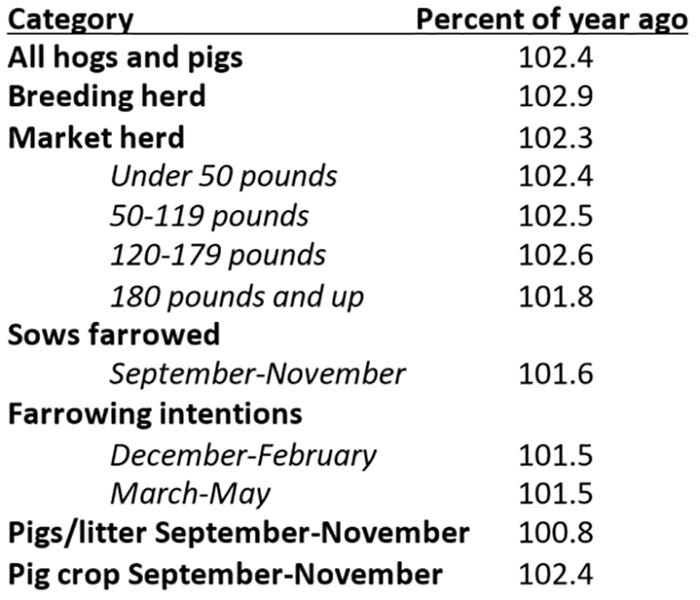
Pigs report predicted (up 1.5% versus up 2.0%). My forecast of slower growth than in recent years reflects the expected reaction to reduced profitability for hog producers.
The inventory of market hogs weighing 180 pounds and up should match up with barrow and gilt slaughter during December and early January. Thus far, December hog slaughter is up a bit over 1%.
Pork trade continues to do well. U.S. pork exports have been above the year-earlier level for 15 consecutive months. Pork imports have been below the year-ago level for six consecutive months. In October, the most recent month with data available, nearly six pounds of pork were exported for each pound the U.S. imported.
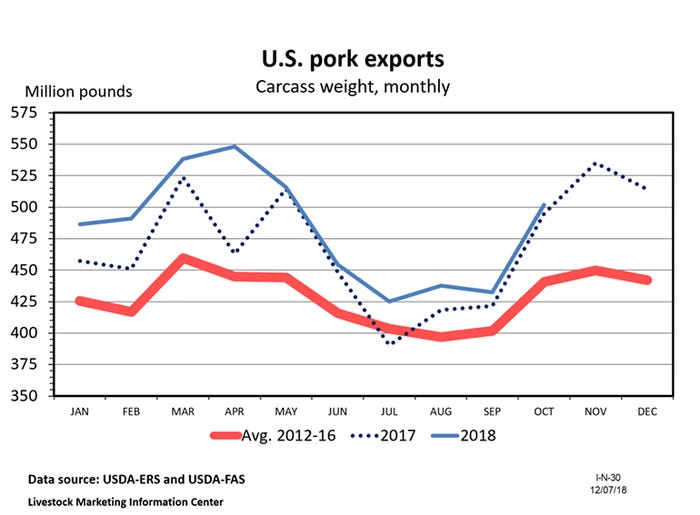
USDA is forecasting 2018 pork production will come in 2.8% above last year. For 2019, they expect pork production to be up 5.3% and exports up 7.8%. That exports are growing faster than production helps hold down domestic supplies and support hog prices. Nonetheless, the domestic per capita pork supply in 2019 is expected to be the highest since 1999. USDA expects 2018 live hog prices to average 9% lower than last year. They are forecasting 2019 prices to average 7% lower than this year.
Hog imports have been lower than last year for every month in 2018 except for August.
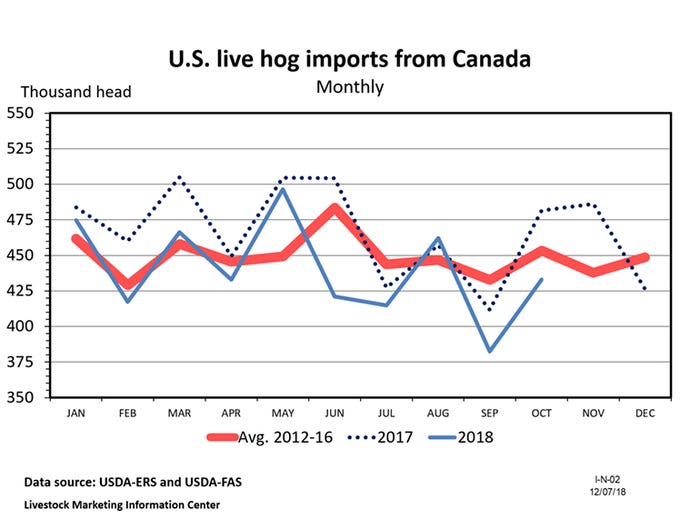
For the year, U.S. pork exports in 2018 are expected to break the record set in 2017 and hog imports are expected to be the lowest since 2014.
Hog slaughter continues to set records. Daily federally inspected hog slaughter has exceeded 480,000 twice: 483,761 head on Nov. 13 and 480,377 head a day later on Nov. 14. There is a good chance daily slaughter will go over 480,000 again before the end of December.
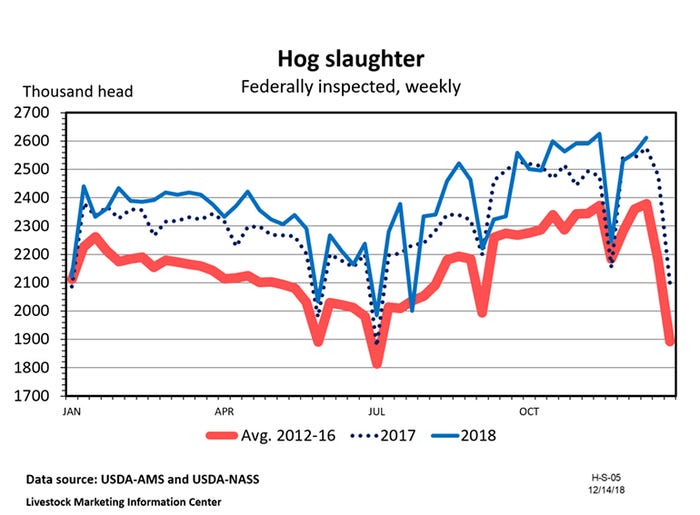
Prior to this fall, the record for federally inspected hog slaughter in a single week was 2.575 million head for the week ending Dec. 16, 2017. That is now the sixth largest week. Federally inspected hog slaughter for the week ending on Nov. 17 was 2.626 million head, the first week ever above 2.6 million. The preliminary estimate for last week’s slaughter is 2.612 million.
It looks like 2018 commercial hog slaughter in 2018 will total roughly 24.5 million head, up 2.6% from last year’s record.
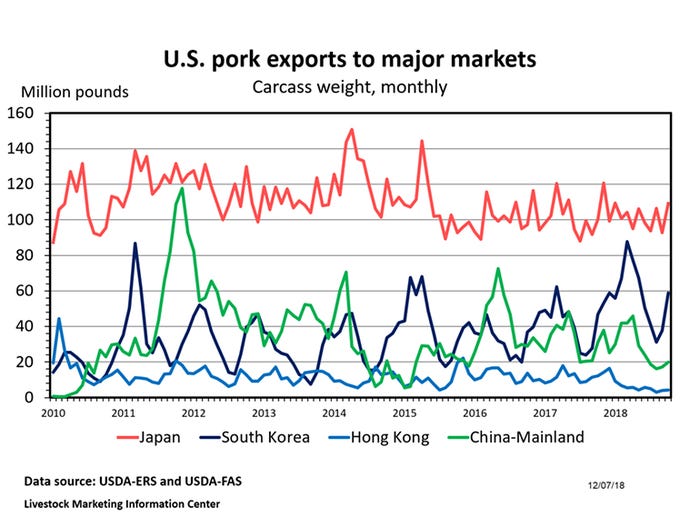
Current issues regarding China are both a plus and a minus on pork trade. Poor relations between China and the United States are having a negative impact on China’s willingness to buy U.S. products. African swine fever is causing a decline in Chinese pork production which puts pressure on them to import more pork. During the first 10 months of 2018, U.S. pork exports to China and Hong Kong were down by 93 million pounds. Fortunately, this was more than offset by shipments to South Korea which were up 161 million pounds compared to January-October 2017.
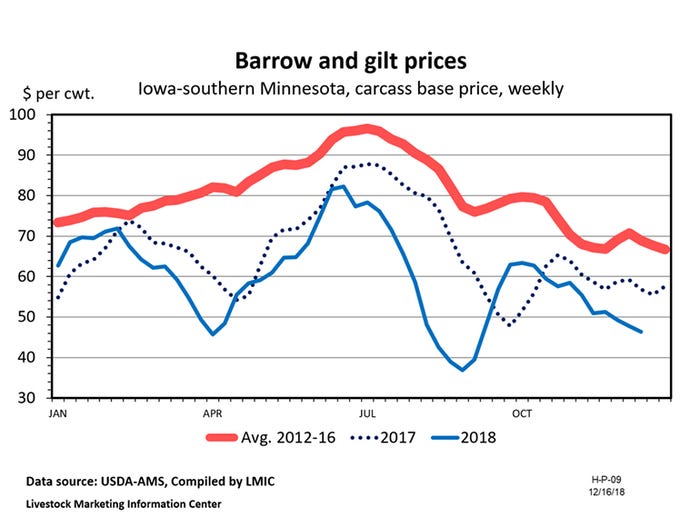
USDA is forecasting an average liveweight price for barrows and gilts of $45.86 per hundredweight this year and between $41 per hundredweight and $44 per hundredweight for next year.
The average liveweight price for 51-52% lean hogs in October was $42.19 per hundredweight, down $5.35 per hundredweight from October and down $4.27 per hundredweight from a year earlier.
The average retail price of pork in grocery stores during November was $3.701 per pound, down 2.6 cents from the month before, down 8.5 cents from a year ago and the lowest for any month since June. Obviously, low retail pork prices keep pressure on hog prices.
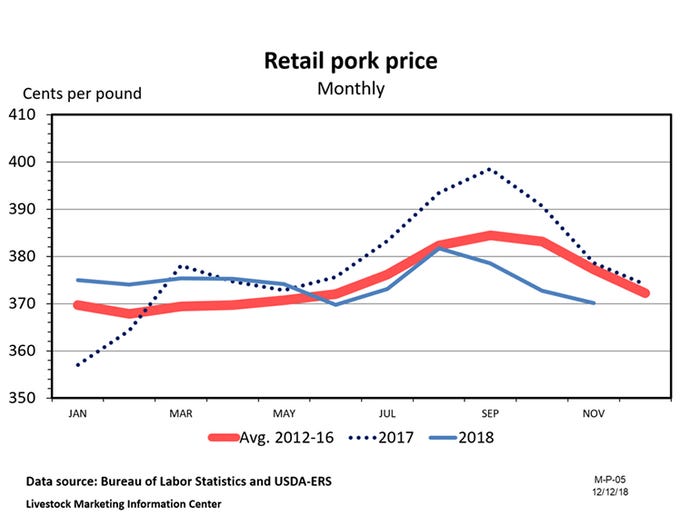
Margins for middlemen shrank in October. The farm-to-wholesale price spread was down 9.8 cents from October and the lowest since May.
On Thursday afternoon of this week, USDA will release their monthly Livestock Slaughter report. Preliminary data indicate November hog slaughter was up 4.9%, year-over-year. November had the same number of slaughter days as last year so daily slaughter was up the same amount. On Thursday, USDA also releases the December Cattle on Feed report and the quarterly Hogs and Pigs report. The December Cold Storage report comes out on Friday afternoon.
About the Author(s)
You May Also Like





